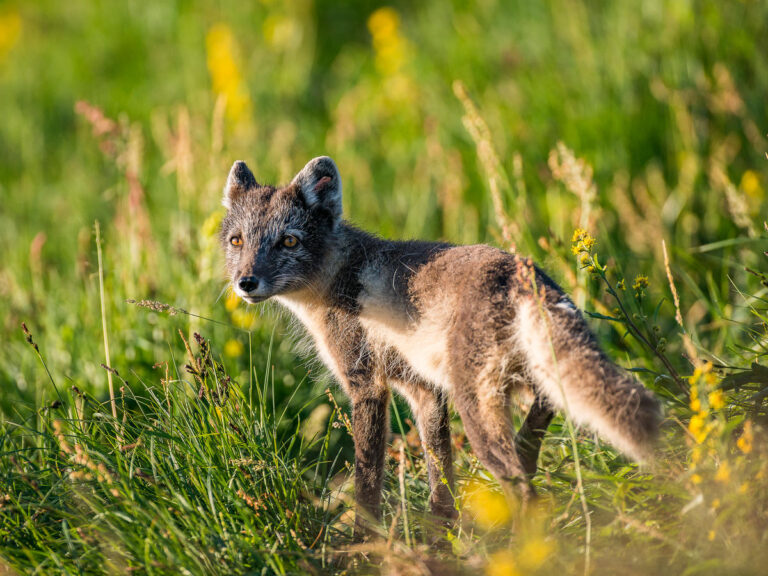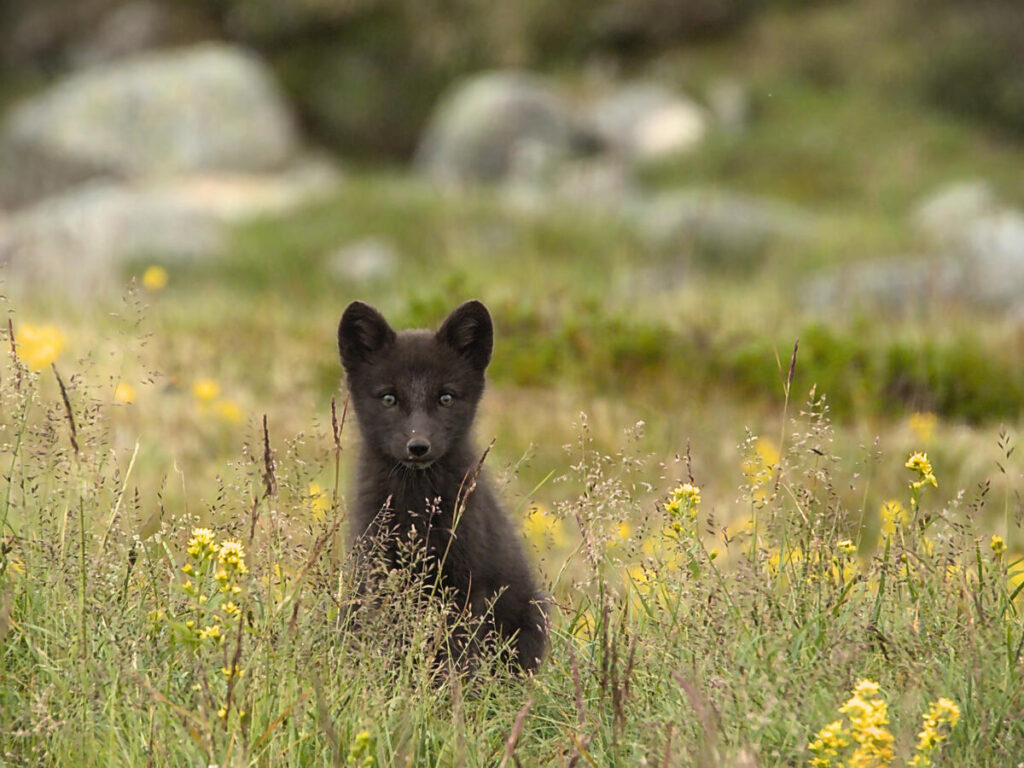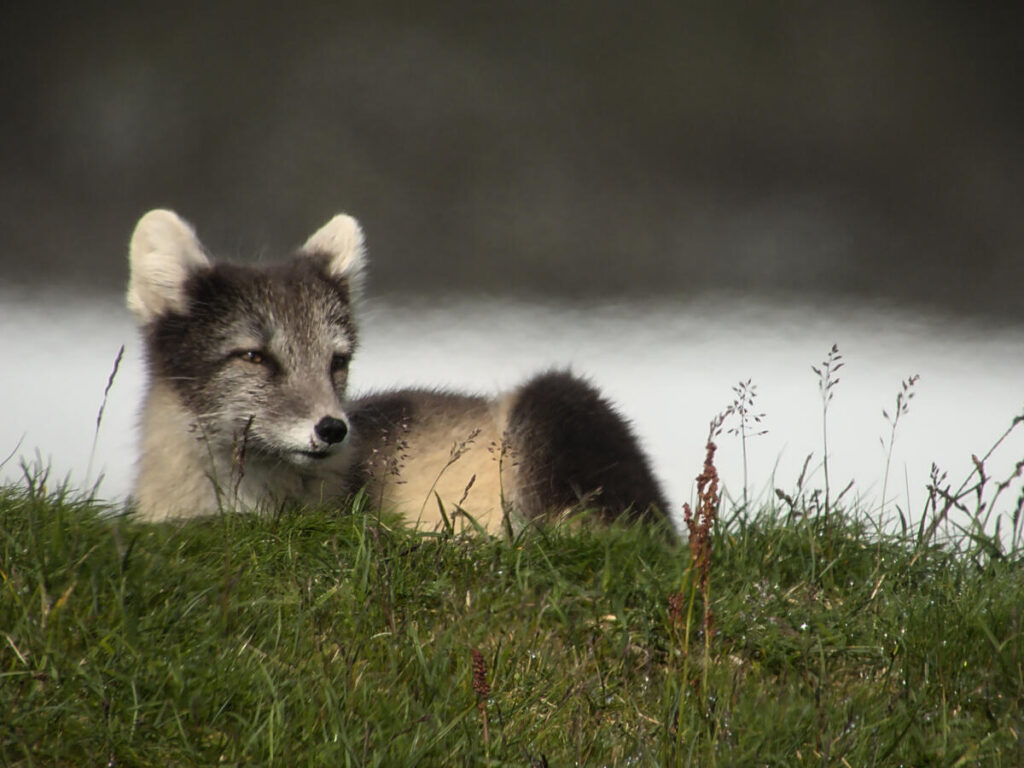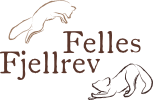About the Arctic fox
The Arctic fox lives on tundra and in bare mountain regions above the tree line and is thoroughly adapted to the Arctic climate. Along with the reindeer and the lemming, the Arctic fox is one of the oldest mammal species on the Scandinavian peninsula.
The Arctic fox is small and dainty and moves nimbly around in the mountain landscape. The colour of its coat varies from white in winter to brown in summer or blue-black all year round. Although the Arctic fox is an omnivore, it is heavily dependent on the availability of small rodents, particularly lemmings. The number of lemmings varies, normally according to a four-year cycle. That means that in some summers there is an abundance of lemmings, whereas in other years they may disappear completely. The availability of lemmings affects the number of Arctic fox litters and the size of those litters. In bad lemming years, there are sometimes no cubs born at all.
They live in pairs
Arctic foxes live in pairs and the parents work together to defend their territory and raise their cubs, which is probably a demanding job. In a good lemming year, there may be up to 16 cubs in a litter, though normally there are 5-10 cubs. The Arctic fox digs underground dens for its family to live in. These dens can have dozens of exits and are used year after year. The cubs are born in May/June and stay close to the den until the autumn, when they disperse.
Many Arctic foxes in the world, but few in Scandinavia
There are several hundred thousand Arctic foxes in the world, but only a few remaining in Scandinavia. The Arctic fox began to decline in Scandinavia in the mid-1800s. High pressure from hunting caused a sharp decline in the Arctic fox population. Despite early efforts to protect and save the Arctic fox, the species continued to decline.


The biggest threat is climate change
The most serious threat to the Arctic fox’s existence is climate change, which affects the mountain environment in a number of different ways. More frequent rainfall in winter causes a hard frozen crust on the snow and a thin coating of ice, which makes it much more difficult for rodents and ptarmigans to access food. This is probably the main reason why years with good access to rodents have become less frequent.
Help the arctic fox – do not feed the red fox
Another effect of climate change is the fact that the red fox is spreading above the tree line, where it does not normally live. Along with increased human activity in the mountains, this has significantly increased the spread of the red fox. When litter and/or food scraps and game are left in the mountains this attracts red foxes.
The red fox is almost twice the size of the Arctic fox and poses a threat in several ways – both as a competitor for food but also because red foxes actually kill Arctic foxes.
The overpopulation of red foxes can be controlled by minimizing food scraps and game waste left behind by humans in the wilderness. Anyone can help protect the Arctic fox by properly disposing of food waste that attracts red foxes.
Take with you only as much food as you need and check in advance if there is any opportunity for composting food waste along your route. Do not leave food scraps in the wilderness. If you cannot take them with you, bury the scraps in the ground or under stones.
Fishing and hunting waste or bycatch should not be left in the wilderness, as it attracts red foxes. Be prepared to either take the game waste back to your accommodation or bury it in the ground or under stones so that red foxes cannot detect it.

Felles Fjellrev is working to secure the future of the Arctic fox
The Arctic fox population is currently small and geographically fragmented. The approximately 550 Arctic foxes are spread over a large area, which makes it difficult for them to find one another. Felles Fjellrev is working at several different levels to secure the future of the Arctic fox. The methods used include supplementary feeding to establish connections between isolated groups of Arctic foxes to enable them to meet and carry out a genetic exchange with one another and reducing the number of red foxes in the high mountains.
